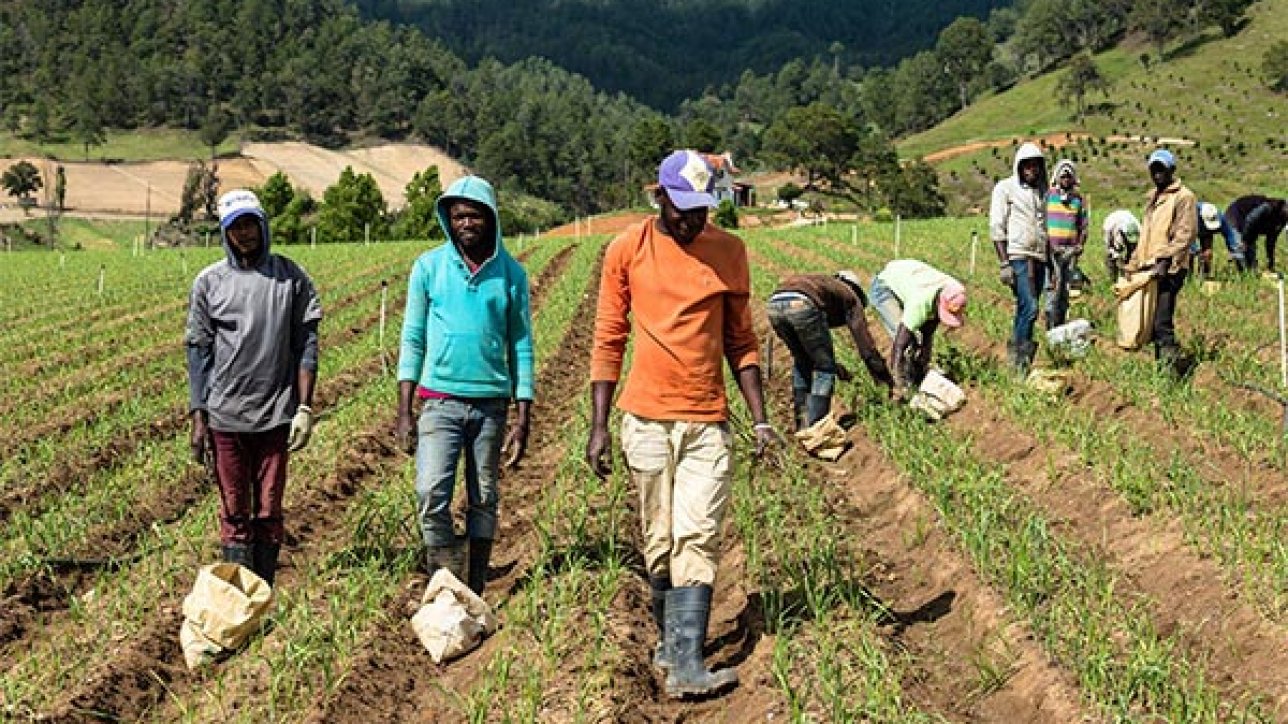IFPRI’s flagship report examines the major food policy issues, developments, and decisions of 2019. Revitalizing rural areas, improving rural lives, and meeting the SDGs. Link: http://gfpr.ifpri.info
As Coffee Rust Devastates Latin America, Colombia’s Cenicafé Leads The Resistance
“In the 18th and 19th centuries, the British controlled vast coffee plantations across southern India and Ceylon, now known as Sri Lanka. But a strange fungal disease called coffee rust became widespread by the mid-19th century, crippling the industry and forcing producers to switch to tea cultivation. “Now the shift could be happening again in the “New World,” as coffee rust strikes at crops across Central and South America. A recent outbreak is causing the worst devastation since the disease was first spotted in the Western Hemisphere in 1970; Guatemala has declared a national emergency, 2013-2014 harvests in some parts of Costa Rica may be half of what they were last year and there are troubling reports of the disease in Nicaragua, El Salvador and Mexico. “But coffee culture in the Americas may not be doomed. Leading the charge is Colombia’s Cenicafé, a research organization funded by the Federación Nacional de Cafeteros de Colombia (National Federation of Coffee Growers of Colombia).
“Thanks to early research, Cenicafé was ready with a rust-resistant coffee plant variety a year before the pestilence first struck Colombian operations in 1983, according to Gaitan.Today, more than 55 percent of farmers grow both Colombia and castilla varieties by Cenicafé estimates. The results are striking: in 2011, more than 40 percent of all Colombian plantations were infected with coffee rust. As of 2013, Cenicafé puts that number at 5 percent. The news from “Rachel Tepper, The Huffington Post, 03/25/2013
World agriculture: towards 2015/2030 An FAO perspective
This report is FAO’s latest assessment of the long-term outlook for the world’s food supplies, nutrition and agriculture. It presents the projections and the main messages. The projections cover supply and demand for the major agricultural commodities and sectors, including fisheries and forestry. This analysis forms the basis for a more detailed examination of other factors, such as nutrition and undernourishment, and the implications for international trade. The report also investigates the implications of future supply and demand for the natural resource base and discusses how technology can contribute to more sustainable development. Available in pdf, in part or in full. FAO 2003. Read the book online>>
Global Food Policy Report 2012
IFPRI’s flagship report examines the major food policy issues, developments, and decisions of 2012. By putting into perspective the year’s food policy successes and disappointments, it suggests how to move forward those policies that improve the food situation for the poor.
Link: http://www.ifpri.org/sites/default/files/publications/gfpr2012.pdf
2012 Global Hunger Index
The 2012 Global Hunger Index (GHI) report—the seventh in an annual series—presents a multidimensional measure of global, regional, and national hunger. It shows that progress in reducing the proportion of hungry people in the world has been tragically slow. According to the index, hunger on a global scale remains “serious.” The 2012 GHI report also focuses particularly on how to ensure sustainable food security under conditions of land, water, and energy stress. The stark reality is that the world needs to produce more food with fewer resources, while eliminating wasteful practices and policies.
In the coming decades food security will be increasingly challenged by land, water, and energy scarcity. To improve poor people’s nutrition and food security in this environment, we will need to make a diverse range of foods more available and accessible, identify and address wasteful practices and policies, and ensure that local communities have greater control over and access to productive resources. In other words, we need to build a sustainable world, where the degradation of ecosystems is halted or reversed and all people have access to food, clean water, and modern energy and are empowered to use them for their own well-being.
Link: http://www.ifpri.org/ghi/2012
Connected Agriculture: The Role of Mobile in Driving Efficiency and Sustainability in the Food and Agriculture Value Chain
In this 39-page report, Vodafone and Accenture, working in collaboration with Oxfam GB, identify 12 opportunities for mobile phone technology to increase agricultural income and productivity. According to the report, mobile communications can help to meet the challenge of feeding an estimated 9.2 billion around the globe by 2050. The 12 specific opportunities explored in this study could increase agricultural income by around US$138 billion across 26 of Vodafone’s markets in 2020. This report was produced to stimulate the engagement between mobile operators, governments, non-governmental organisations, and businesses to realise these opportunities and explore others. Link:
http://www.vodafone.com/content/dam/vodafone/about/sustainability/2011/pdf/connected_agriculture.pdf



